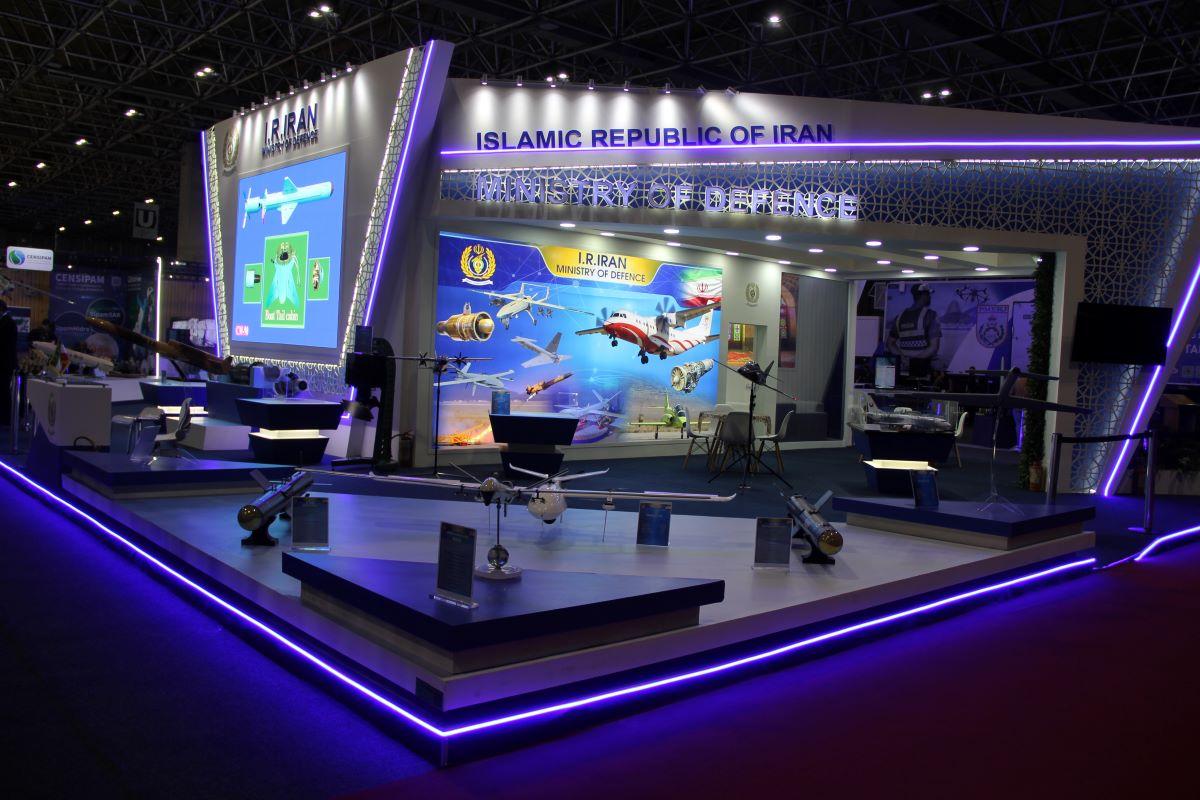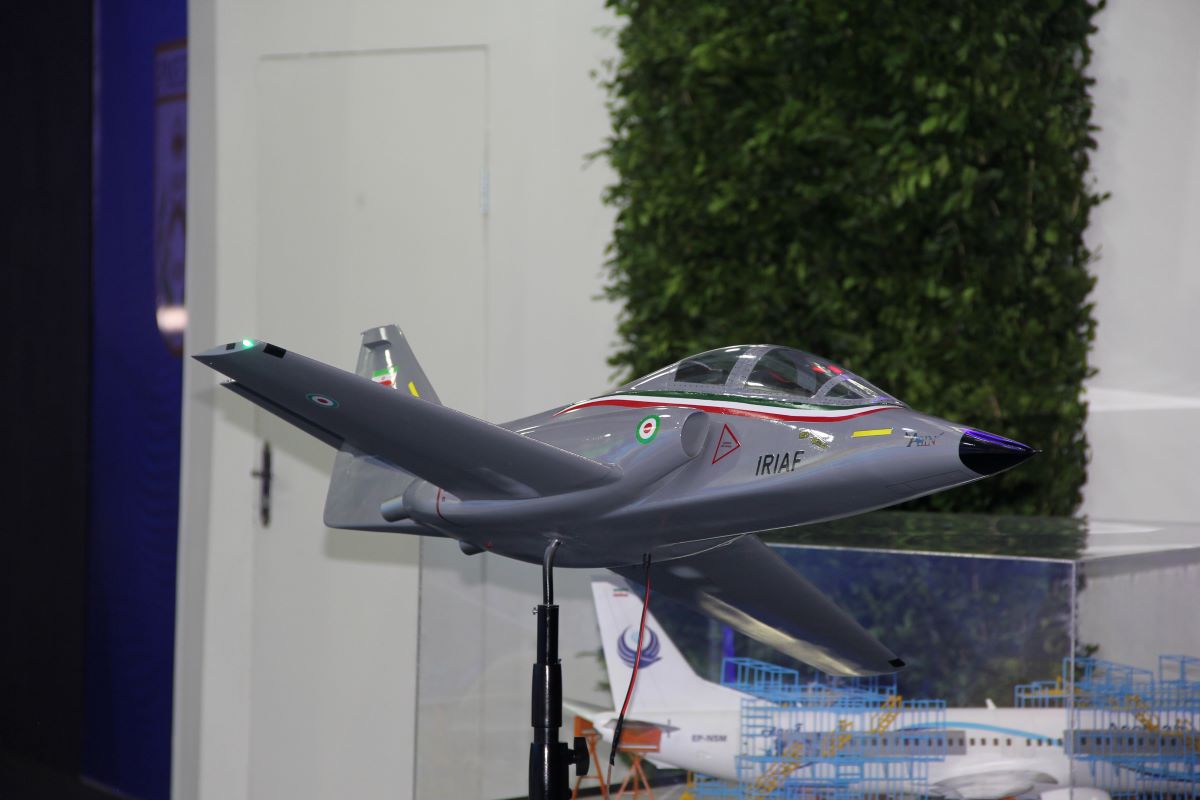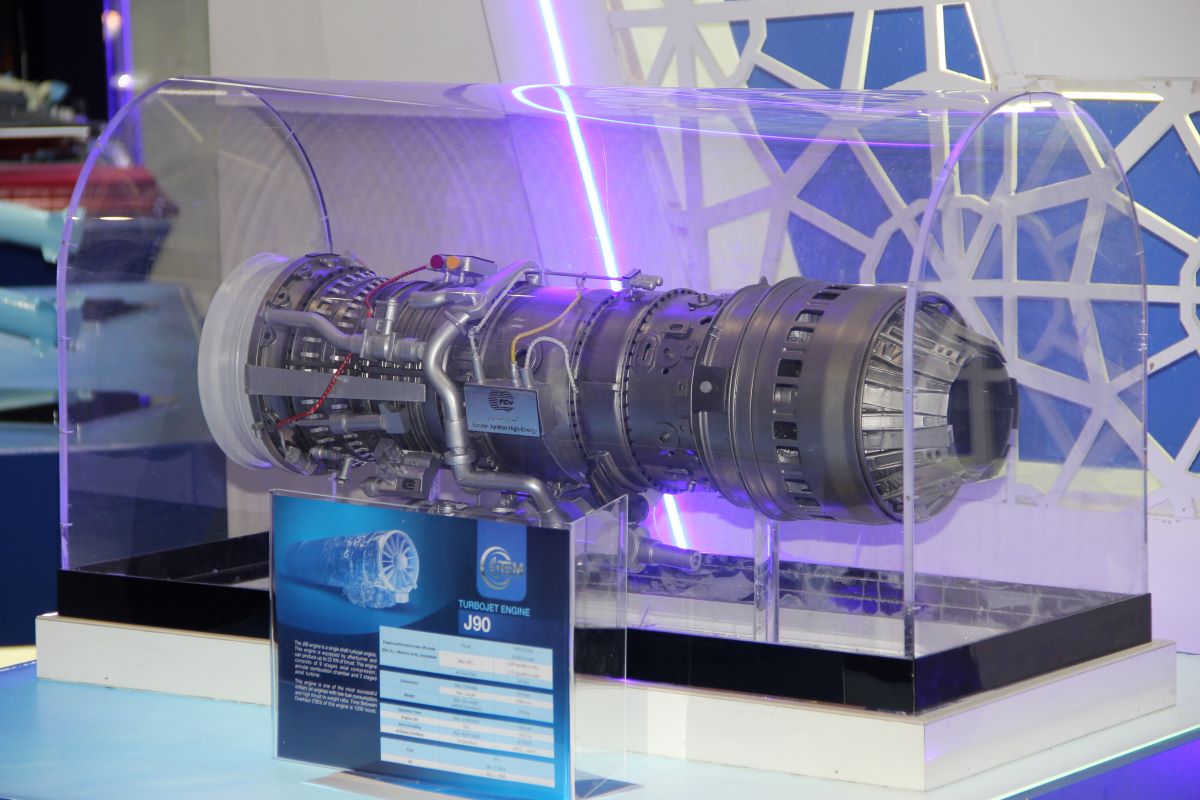This article is published in Aerospace Daily & Defense Report part of Aviation Week Intelligence Network (AWIN), and is complimentary through Apr 17, 2025. For information on becoming an AWIN Member to access more content like this, click here.
Debrief: How I Learned Iran’s Aviation Industry Chief Reads Aviation Week

Iran’s Defense Ministry exhibited its many aircraft and missile products at the Latin American Aerospace and Defense show.
RIO DE JANEIRO—This is the story of my impromptu interview here on April 2 with Lt. Brig. Gen. Afshin Khajehfard, head of the Iran Aviation Industries Organization (IAIO) and one of the most heavily sanctioned individuals in the global defense industry.
It started with an unexpected sight in the depths of Hall 4 of the Latin American Aerospace and Defense (LAAD) exhibition. There it was: a sprawling stand for the Iranian Ministry of Defense, packed with models showing off a generous sampling of the Islamic Republic’s indigenous missiles, drones, sensors, jet engines and military trainer aircraft.
As I paused to soak in the display and search my vague memories of texts I have read about Iran’s growing presence in South America, I was interrupted.
“May I ask who you are?” said a representative at the booth. His posture was polite, not intimidating.
Reflexively, I showed him my pass, which identified me as member of the press from Aviation Week in the U.S.
“Oh, Aviation Week. We know this. Do you have any questions?” he asked in a helpful tone.

Credit: Steve Trimble/AW&ST
I certainly did. What is that jet engine? It is the subsonic turbojet that has been reverse-engineered and improved from the General Electric J85 for Iran’s subsonic Yasin trainer, he explained. Well, I asked, why does it have an afterburner then? There is a non-afterburning variant for the Yasin, he replied, and the afterburner version powers Iran’s formerly J85-equipped Northrop F-5 derivatives, such as the Saeqeh. Iran can produce 12 of the engines per year, he added.
This exchange continued for a few minutes, with discussion of details of other models around the booth. But then he stopped to track another man in an Iranian uniform who had just entered the booth and moved toward an interior meeting room. Once the man was out of sight, my host snapped back to me with a question: “Would you like to interview the director of Iran’s aviation industry?”
“Yes,” I answered, immediately.
“Come with me,” he said.
A few moments later, there I was in an interior meeting room filled with eight plush white armchairs arranged in a horseshoe, with the head of Iran’s aviation industry seated at the top. I noted his name tag read “A. Khajehfard” as I sat down next to him. I remembered reporting from Israel’s northern and southern borders last September, warily scanning the skies for any signs that his organization’s missiles and drones were inbound. And now he was here, welcoming me and patiently waiting for me to ask my first question. Small world.

Credit: Steve Trimble/AW&ST
If I had even a few minutes to prepare for such a rare opportunity, I would have searched the Stockholm International Peace Research Institute database and found Iran has been active in South America, supplying Mohajer uncrewed aircraft systems and CM-90 Nasr anti-ship missiles to Venezuela. And I would have found a 2023 report by the Institute for the Study of War, which reported on an Iranian defense pact with Bolivia that might lead to the supply of reconnaissance drones. And I would have been reminded after a quick Google search that Iran joined the BRICS (Brazil, Russia, India, China and South Africa) consortium last year, a move welcomed by Brazilian President Luiz Inacio Lula da Silva.
In any event, Khajehfard declined to answer questions about export opportunities in Latin America, saying he was the director for the development and manufacturing. Sales, especially overseas, are someone else’s responsibility.
“What are your technology development priorities?” I asked.
Khajehfard responded by switching topics, complaining about the international sanctions on his organization and himself.
“Because we are in sanctions conditions, we cannot talk about any research in aviation, UAVs or ground-based technologies [with potential customers],” Khajehfard said through an interpreter. “Also, we cannot have good cooperation and collaboration with other countries because of these conditions.”
Despite those constraints, he responded to more specific follow-up questions. In the area of propulsion, Khajefard confirmed development is underway of a new turboprop engine for the Simorgh cargo aircraft, a reverse-engineered copy of the IrAn-140 variant of the Ukrainian-built An-140. Ukraine-based Motor Sich was the original engine supplier for the IrAn-140, but its factory has been damaged significantly after several missile attacks by Russia, a client of Iranian munitions.
On the topic of munitions, I asked what lessons Iran is applying in missile designs from recent operations. Khajefard answered that they are improving designs based on feedback from operators, but declined to provide specific examples.
I noted that Iran’s booth included a mock-up of a mechanically scanned synthetic aperture radar. Wondering if Iran had any interest in active electronically scanned arrays, I asked Khajefard if Iran is working on any new kinds of radar technology.
“We are developing air and land and sea radars,” Khajefard said. “Especially, we have done work in detecting aircraft with low-radar cross-section.”
At this point, I noticed a photographer had entered the room, snapping pictures of our interview. Suspecting my hastily arranged interview might be a ploy to produce some cheap propaganda, I thanked him for trying to answer my questions and stood up to leave. Khajefard had one more thing to say.
“I look at Aviation Week and read your articles,” he said.
“Thank you,” I replied, and left.





